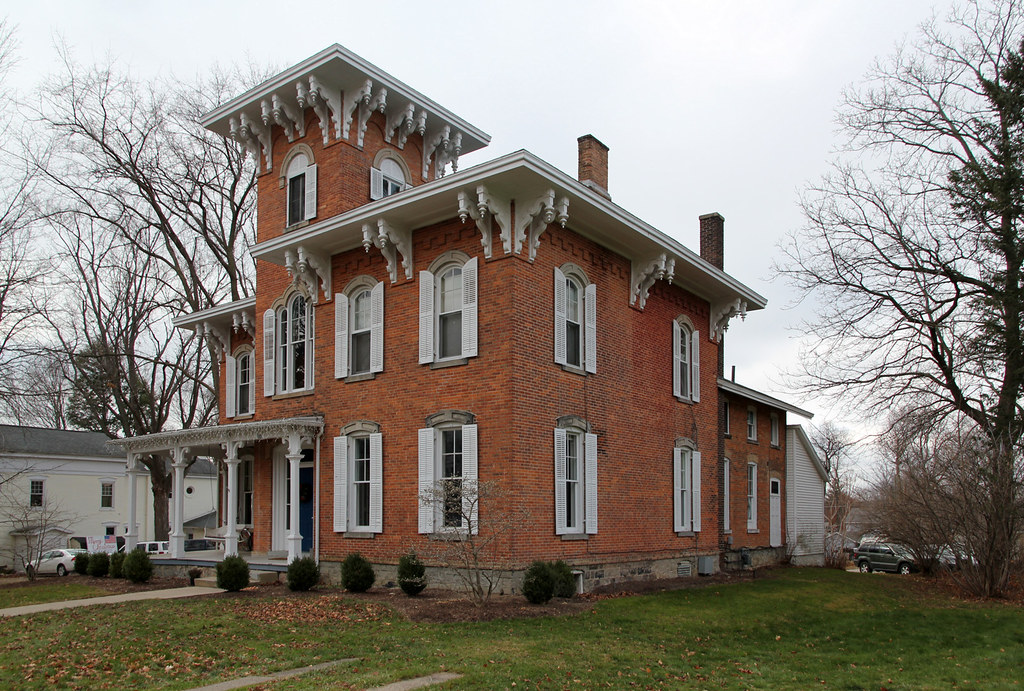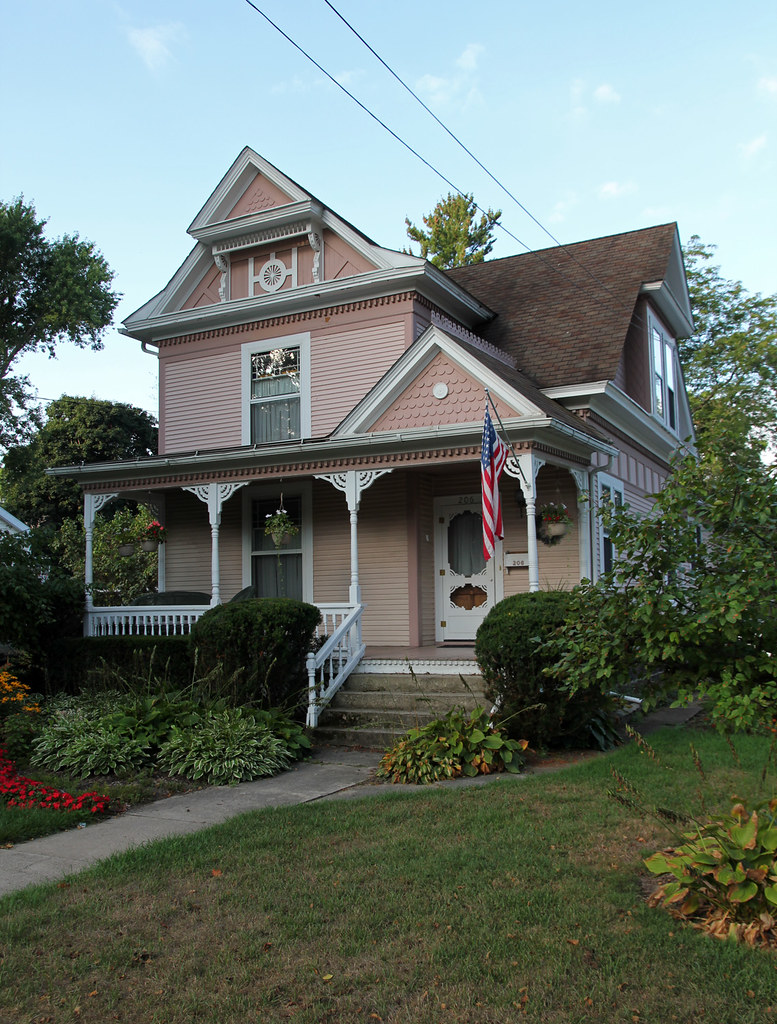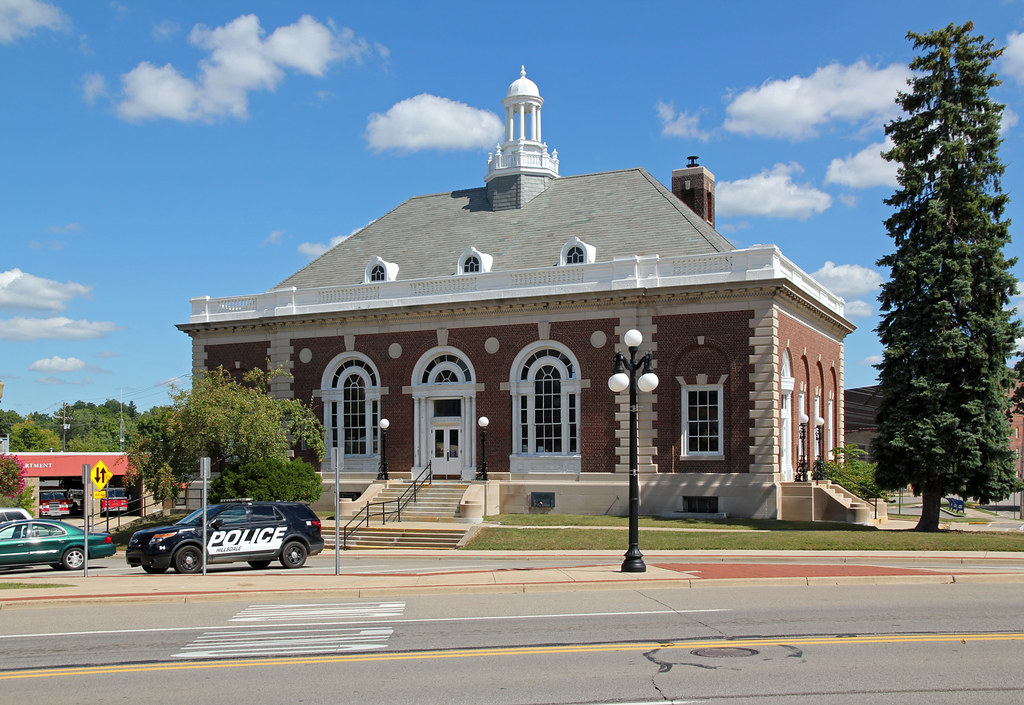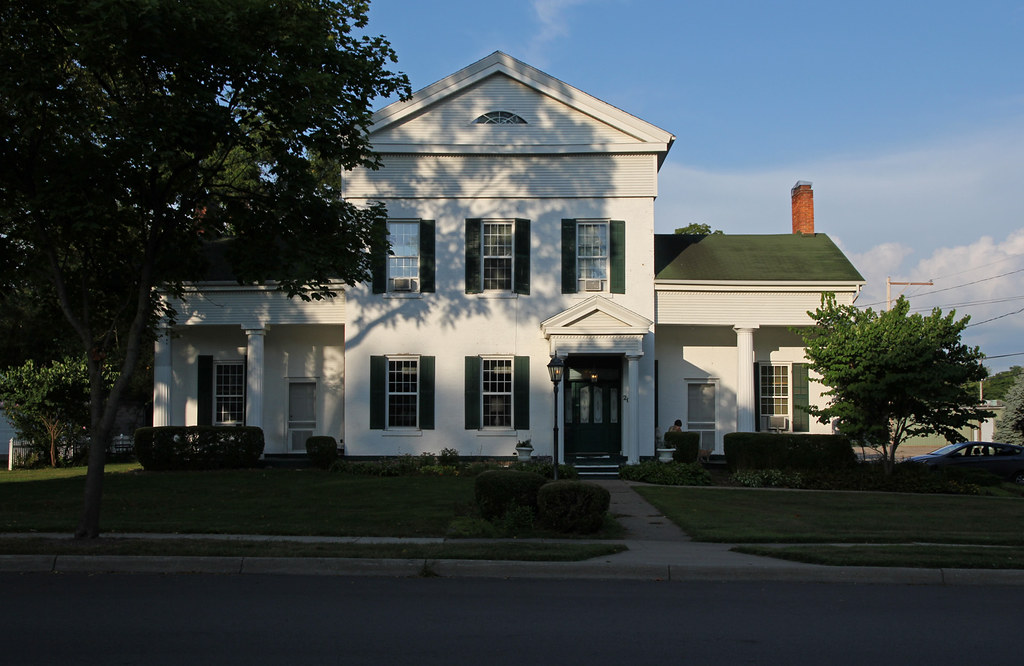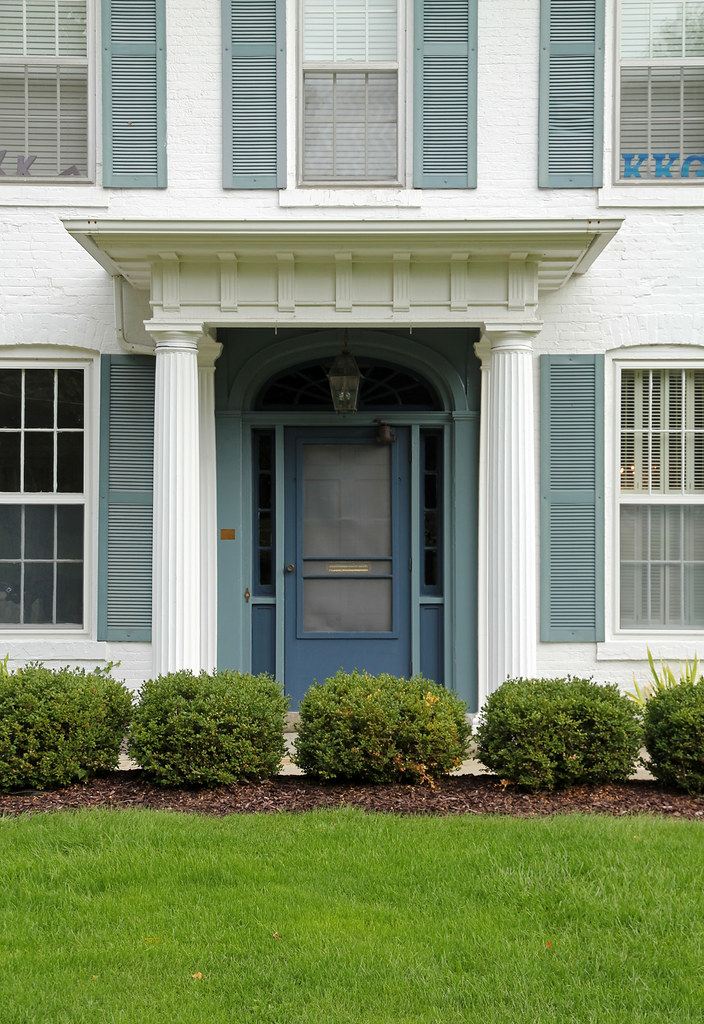Though hardly matching the classical elegance of, say, a marble colonnade in an Alma-Tadema painting, the buildings erected in Hillsdale between 1865 and 1900 reveal an optimism unique to the post-war period. Two buildings on the Hillsdale College campus illustrate the Italianate style particularly well. The Lorenzo Dow House, now a dormitory, is a textbook example of the type, with its asymmetry, tall tower (emulating the Italian campanile, or bell tower), generous roof overhang, and bracketed eaves.
Central Hall, which replaced the original Hillsdale College building
after an 1874 fire, is also chiefly Italianate.
If the Italianate and Gothic Revival styles (the latter omitted from this essay because of its scarcity in Hillsdale County) brought about the architectural eclecticism of the late 19th century, the group of related styles collectively termed “Queen
Anne” perfected it. Such architecture
originated as an American response to the work of British designers Richard
Norman Shaw and Charles Eastlake. Carpenters,
using jigsaws, turning lathes, and other woodworking tools, (3) freely
combined motifs from various styles, adorning their creations with rich
ornamentation. So-called “Victorian”
homes are undeniably showy (see, for example, the colorfully painted Jonesville
residence illustrated in this article), and, for some, obnoxious. The men who built these houses at least deserve
to be commended for their invention,
though.
About
the turn-of-the-century, classicism once again enjoyed a renaissance. The earliest Classical Revival residences of
this period melded late 19th century forms with Greco-Roman ornamentation;
at least one guidebook categorizes such architecture as a subset of the Queen
Anne style, (4) rather
than a style in itself. The Classical
Revival mode was particularly popular for institutional structures, and
architects designed innumerable courthouses, libraries, post offices, and banks
in the style. In Hillsdale, notable
Classical Revival buildings include the 1911 City Hall, 1912 Post Office, and a
number of residences.
Neoclassicism never disappeared entirely (indeed, certain classical
motifs have become clichés in suburbia), but its relevance diminished in the
postmodern era. Greco-Roman architecture,
it seems, is yet again in vogue, if the rift between the Hillsdale College
buildings erected in the 1950s and 1960s (Simpson, McIntyre, and Olds dorms,
especially) and those constructed in the last decade is any indication. That “traditional” architecture persists in the West, despite
intervening faddish periods, is a testament to its brilliance.
1) Though the Italianate style emerged before the Civil War, it did not supplant the earlier Greek Revival mode until the war’s end. Hillsdale County, a location relatively isolated in the 1860s, contains few pre-1860 Italianate buildings; most standing examples exist in urban centers and dot the wealthy East Coast.
2) Ithna Thayer Frary, Early Homes of Ohio (Richmond: Garrett & Massie, 1936), 232.
3) Ibid., 237.
4) Virginia and Lee McAlester’s A Field Guide to American Houses describes these transitional buildings as “free classic.”
1) Though the Italianate style emerged before the Civil War, it did not supplant the earlier Greek Revival mode until the war’s end. Hillsdale County, a location relatively isolated in the 1860s, contains few pre-1860 Italianate buildings; most standing examples exist in urban centers and dot the wealthy East Coast.
2) Ithna Thayer Frary, Early Homes of Ohio (Richmond: Garrett & Massie, 1936), 232.
3) Ibid., 237.
4) Virginia and Lee McAlester’s A Field Guide to American Houses describes these transitional buildings as “free classic.”

